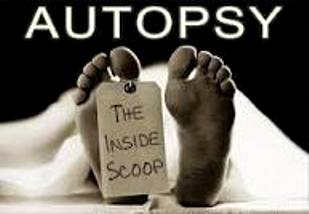Mention an autopsy and people just stop and stare. Almost everyone has heard of it, but not everyone knows exactly when and why they are done. Or exactly who does them. Or even are aware that there are really two distinct types of autopsies.
Here’s a little tidbit to whet your appetite. What does “autopsy” really mean?
It means “To look within oneself.”
When I was an Investigator for the New York City Medical Examiner’s Office, I could not but help notice the engraved inscription in the lobby each morning: “Hic locus est ubi mors gaudet succurrere vitae,” which is Latin for “This is the place where death rejoices to help those who live.”
If you are a writer, and have murder and mayhem in your work, knowing all about autopsies is a MUST.
Why?
First, let’s talk about the two types of autopsies, and why they are done.
One type of autopsy is a “hospital” autopsy. This means that a person has been hospitalized, and has passed away in the hospital, from either a surgery there, a procedure, or being under observation or treatment. If the death is sudden, and unexpected, the family of the deceased can ask for a hospital autopsy to be performed to determine the cause of death. This is done sometimes for a civil lawsuit, if it is felt the hospital and its employees were negligent, or simply because the family wants an answer for their family medical history. In the case of a hospital autopsy, the family requesting it pays for the doctor that performs the autopsy.
The other type of autopsy, and the one most fascinating to people, is the autopsy performed by a forensic pathologist, also known as a “medical examiner.”
A medical examiner must be a licensed medical doctor. They have not only had medical school training, but frequently have four more years of post-medical training in clinical pathology, plus one or more years as an intern at a medical examiner’s office or hospital performing autopsies.
Please do not confuse the term “coroner” with medical examiner. A coroner does not have to be a medical doctor. They can own the corner sandwich shop, or run the automotive repair center across town, as all they need is a minimum amount of medical training. It is usually thus a part-time position, where they are elected or appointed, and it is in case where the jurisdiction employing them is either very sparsely populated, or there isn’t enough crime to warrant paying a full time medical examiner. For example, in Indiana, all a Deputy Coroner needs is 40 hours of medico-legal training. So, all a coroner needs is some biology, anatomy or medical training. An exception to this is California, where they still use the term coroner for their medical examiners. Coroners were the first historically to perform autopsies, but were later replaced over time by medical examiners.
When does a person need to be autopsied?
There are five main reasons: the person has been the victim of an apparent homicide; they have died suddenly and unexpectedly, whether it be without trauma, or with trauma such as a motor vehicle accident, fall, in a fire, etc.; they have died at what is not deemed age appropriate; they have died suspiciously; or they have apparently committed suicide.
An autopsy is a form of criminal investigation where the examination of a human body is performed by dissection and analysis to determine what happened during a person’s life that caused their death.
But what exactly happens at an autopsy?

The medical examiner will first examine the exterior of body, which is called “an external.” In this part, he or she is looking for external trauma, bruises, cuts, wounds, etc. They will also look for any trace evidence (hairs, fibers, blood, paint, etc.) visible on the body. During this external, the medical examiner will frequently record their findings as they walk around the body on an audio recording, oftentimes from a microphone suspended on a boom above the body, with a foot pedal used to control the on and off recording. This way, the medical examiner is free to touch the body without stopping or contaminating the recording device. Most medical examiners will photograph or videograph the entire autopsy as well, either themselves or using a medical investigator or photographer assigned to the medical examiner’s office.
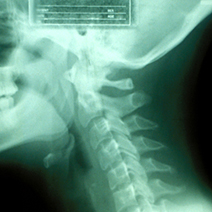
An x-ray is then taken of the body while it is lying on the metal gurney. This is to detect any bullets, broken knife blades or tips, impaled objects, etc. in the body. It is also weighed.
Once the external is done, the clothing is carefully removed and packaged separately. The body is then examined once again for evidence that was not visible with the clothes on, such as bruises, cuts, trauma, tattoos, etc. Many medical examiners will again x-ray the body without the clothing on, as metal pants zippers, coins, belt buckles, etc. may detract from viewing the body without these obstructions.
After this is completed, the body is washed off and placed on its back. The head is supported by a wooden or composite block under the neck. A “Y” shaped incision, using a scalpel, is made cutting the skin down to the bone from the collarbone to the upper groin area. The skin is peeled back, and the ribs are then cut open in this incision with a small saw. This exposes the heart, lungs, stomach, chest, and entire cavity area.
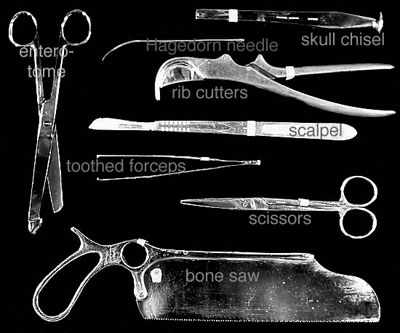
The medical examiner will then take out the major organs, such as the heart, liver, kidneys, lungs, spleen and examine them physically, feeling them for imperfections or deformities. For example, a medical examiner may observe that the heart is enlarged, and that heart disease is what may have caused the person’s death.
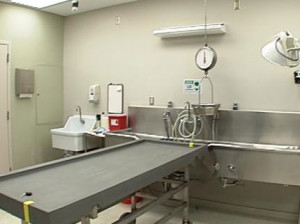
Each organ is then weighed, and a slice is taken for submittal to the toxicology department of the medical examiner’s office. This slice is analyzed for any toxins, narcotics, alcohol or other poisons which may have contributed to the death.
The skull is then cut along the base all around the perimeter of the head with a scalpel, whereupon the skin is peeled back. Then, a small circular saw is used to cut the skull along this perimeter. The sound it makes is unique and never forgotten once heard. When the cut is complete, the medical examiner uses a small prying tool to pop the skull off the head. I have heard this sound too hundreds of times, and it is a popping sound that resembles no other. The brain is then, just like the major organs in the chest cavity, first visually examined, removed, weighed, and a slice taken for the toxicology department. The skull is closely examined for signs of trauma or subdural hematoma, or bleeding under the skin.
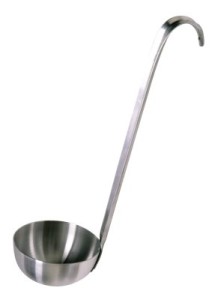
It is a little known secret that blood is also taken from the chest cavity, using a ladle like one may have at home for soup. It is also taken from inside the heart to detect bacteria. There is no blood spurting, because the person is deceased and therefore there is no blood pressure.
Urine is also collected using a syringe from the bladder, and bile from the stomach and gall bladder as well. These are also sent to the toxicology department.
The medical examiner also has several samples analyzed for DNA coding in the event that there is an issue of identity or criminal linking to crimes. Many a crime has been solved by a criminal dying and his or her DNA finally taken at autopsy, only to have it found to match prior sexual assault, murder, etc. scenes.
Of course, if there are any wounds to the body, they are closely documented by photography or video, and subsequently marked on a diagram prepared by the medical examiner. Bullet wounds are traced by the medical examiner to determine where the bullet entered and exited, so oftentimes the body must be turned over several times to document the findings. The medical examiner will also look for old bruises under the skin in suspected cases of assault, domestic violence or child abuse. The assistants helping the medical examiner may be morgue dieners, nursing assistants, or newly trained medical examiners completing their residency requirements.
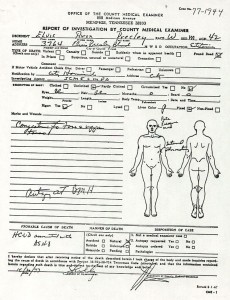
Any evidence found within the body, such as bullets, knives, or anything that the medical examiner feels contributed to the death, will be photographed or videographed, then collected, labeled and packaged securely.
Now that the autopsy is complete, what happens to those organs removed? Believe it or not, they are placed into a plastic bag, tied in a knot, then the bag is placed within the chest cavity. The “Y” shaped incision is then crudely sutured up, only enough to close the opening. The skull is then popped back on the head and also roughly sutured. The rough sutures are because the funeral home will work its magic on making the body presentable for the family paying its respects at a service. Unless there is a hold on the body for suspicious or homicide reasons, it is released to the funeral home.
Sometimes a hold is requested by law enforcement because in cases of a physical assault, child abuse or domestic violence, bruising will continue under the skin for several days after death. It is on those occasions that the body is held, then re-examined days later for additional bruising not present at the initial autopsy. Of course, any additional bruises will be photographed or videographed, and noted on a chart as well.
The medical examiner will issue a temporary autopsy report to those entitled to it, such as the family and law enforcement, but it is not certified as “complete” until the toxicology results come back. Once received these results are added to the report, and based on what was found may alter the original findings. It is common in large jurisdictions for the toxicology results to take months due to heavy volume.
So, why is knowing about medical examiners crucial to your work if you have a crime determined to be under the guidelines for an autopsy?
Think about it.
The autopsy could reveal a completely different cause of death than expected. The medical examiner may be inexperienced and make errors. Or so overworked and burnt out, that he or she misses crucial things. A bullet entrance wound behind the right ear. A knife wound under the left armpit. Or forget to collect samples of the organs for toxicology. Maybe even be paid off by a bribe to overlook something. The possibilities are endless. Remember, they are performing a crucial forensic examination, one that is very important in determining whether or not a crime has been committed.


